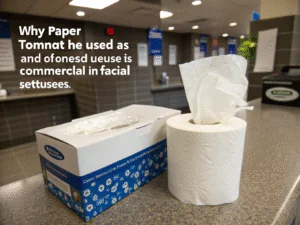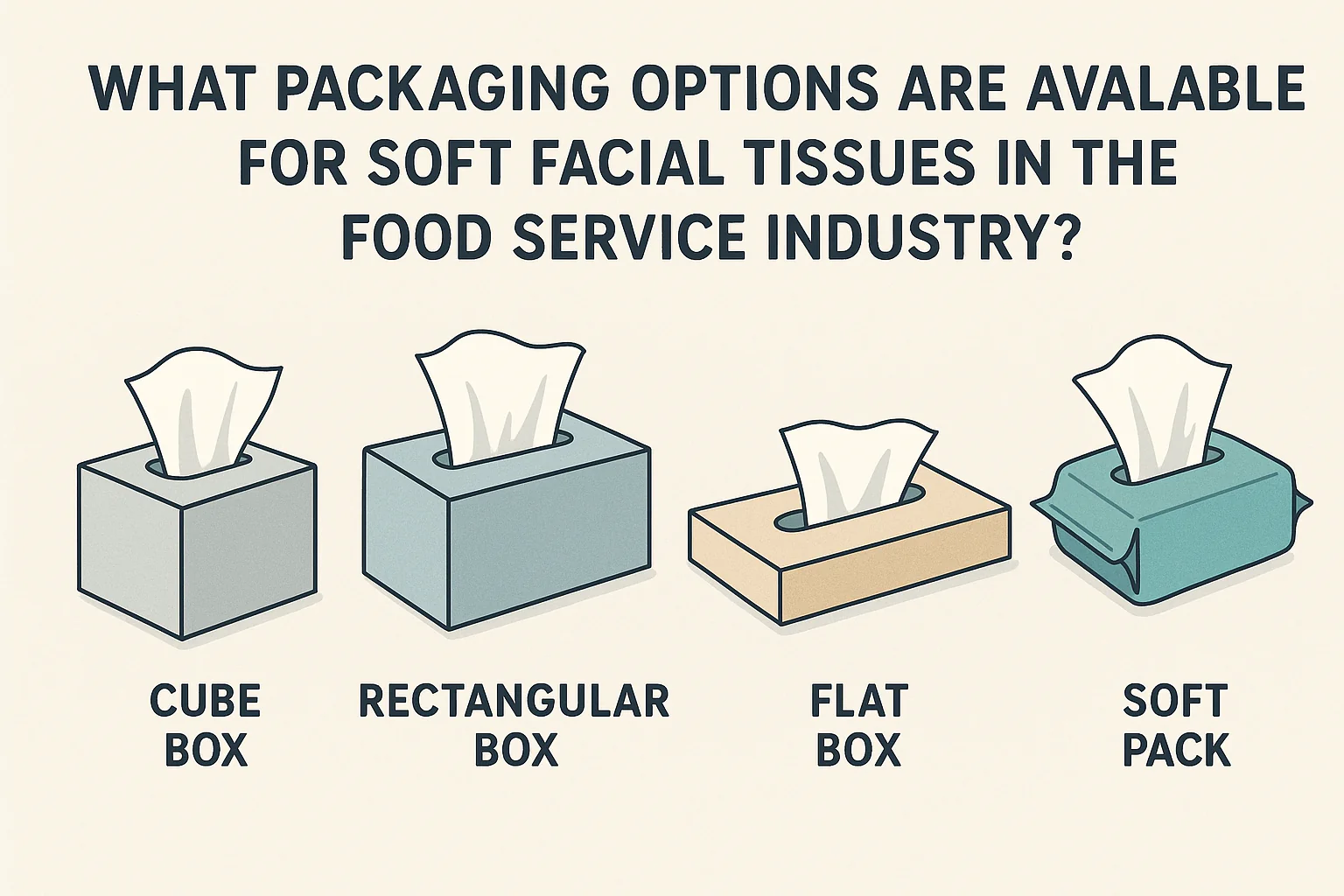What Packaging Options Are Available for Soft Facial Tissues in the Food Service Industry?
Restaurants and cafes compete not only with menus but also with guest experience. Even small details like tissue packaging shape customer impressions.
Soft tissue packaging for the food service industry includes box packs, cube boxes, mini travel packs, and napkin-fold options. Custom logo printing and hygienic sealing make these ideal for restaurants, cafes, and catering services.
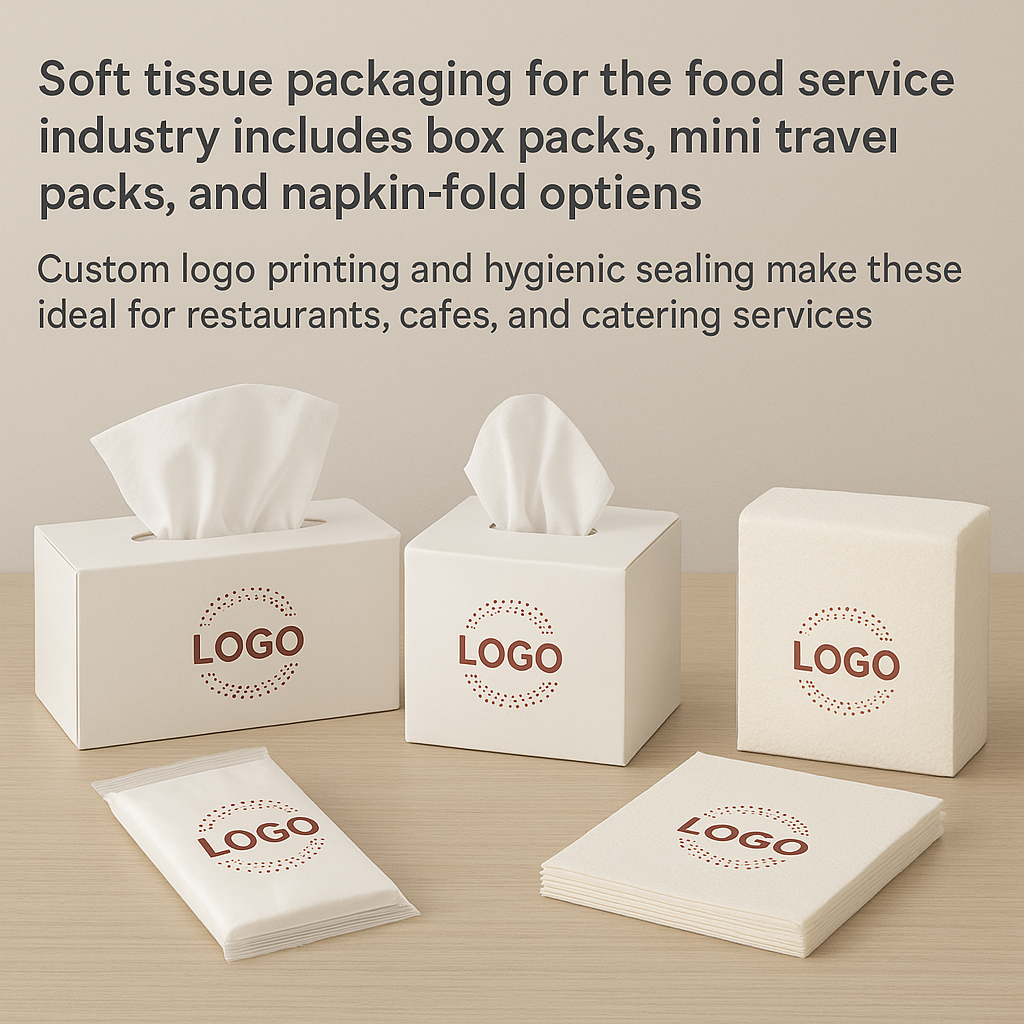
Procurement managers know tissues are not just a necessity. They are part of presentation, hygiene, and branding. Let’s break down the options.
What Types of Tissue Packaging Suit the Food Service Industry?
Every food service setup has different needs. Table dining is not the same as takeaway.
Common packaging formats include tissue boxes, cube packs, mini travel packs, and napkin-style folded tissues. Each format serves a different use case.
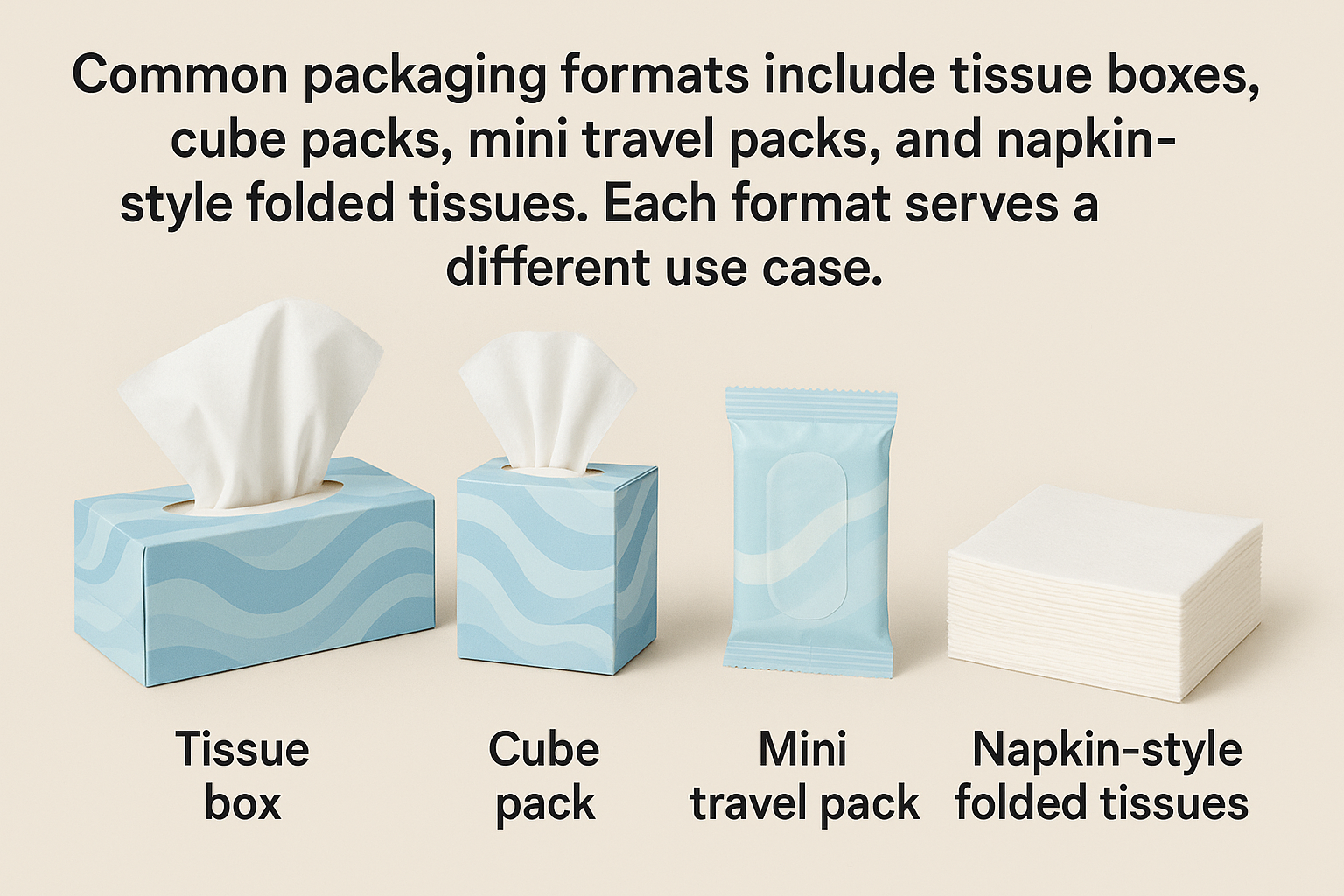
Let's explore more
Boxed tissues are the standard in restaurants with sit-down service. They fit easily on tables and counters, giving guests quick access. Cube boxes are a compact version, popular in cafes with limited space.
Mini travel packs are more useful in catering services or fast-service setups. Guests often carry these packs away, extending brand exposure outside the restaurant. Napkin-style folded tissues are another option, especially for cafes and bakeries that want something between a napkin and a tissue.
In my own visits to hotels in Dubai and Abu Dhabi, I noticed that premium dining spaces always had cube or rectangular boxes with branded logos. Meanwhile, casual cafes favored simple mini-packs or folded tissues for ease. Matching format to service style makes tissue packaging both practical and strategic.
Why Is Hygienic Packaging Essential in Restaurants?
Guests judge hygiene standards in every detail. Tissue packaging is part of that judgment.
Hygienic packaging protects tissues from contamination, keeps them fresh, and reassures customers about cleanliness in restaurants and catering environments.
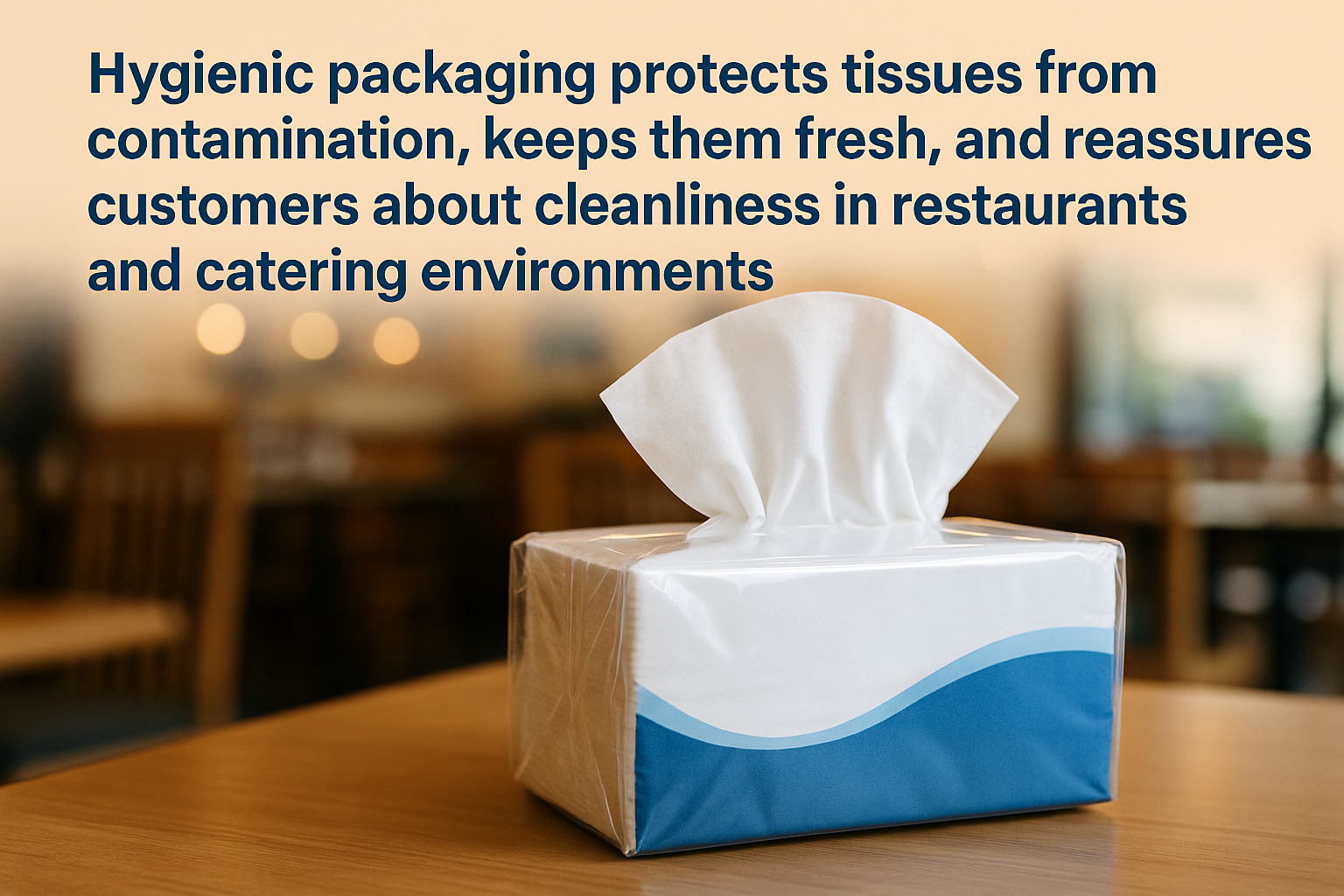
Let's explore more
Food service businesses operate in a high-contact environment. Guests expect tissues to be sealed, dust-free, and dispensed in a way that minimizes direct handling. Box and cube packs usually have plastic seals, ensuring tissues stay fresh until opened.
For catering, mini-packs are even more critical. They keep tissues individually wrapped, reducing the risk of contamination when serving in outdoor or high-volume events. I’ve seen catering teams in Riyadh prefer pocket packs for weddings and conferences because they combine hygiene with convenience.
Hygienic packaging also helps staff. Refill packs can be swapped quickly without exposing tissues to open air. This saves time and reduces complaints.
In today’s market, especially post-pandemic, procurement teams know that sealed, hygienic packaging is not optional—it is the baseline for customer trust.
How Does Custom Logo Printing Help Food Service Businesses?
Every guest touchpoint is a branding opportunity. Tissues are no exception.
Custom logo-printed tissues reinforce brand identity, add elegance to table settings, and create a premium impression in restaurants and cafes.
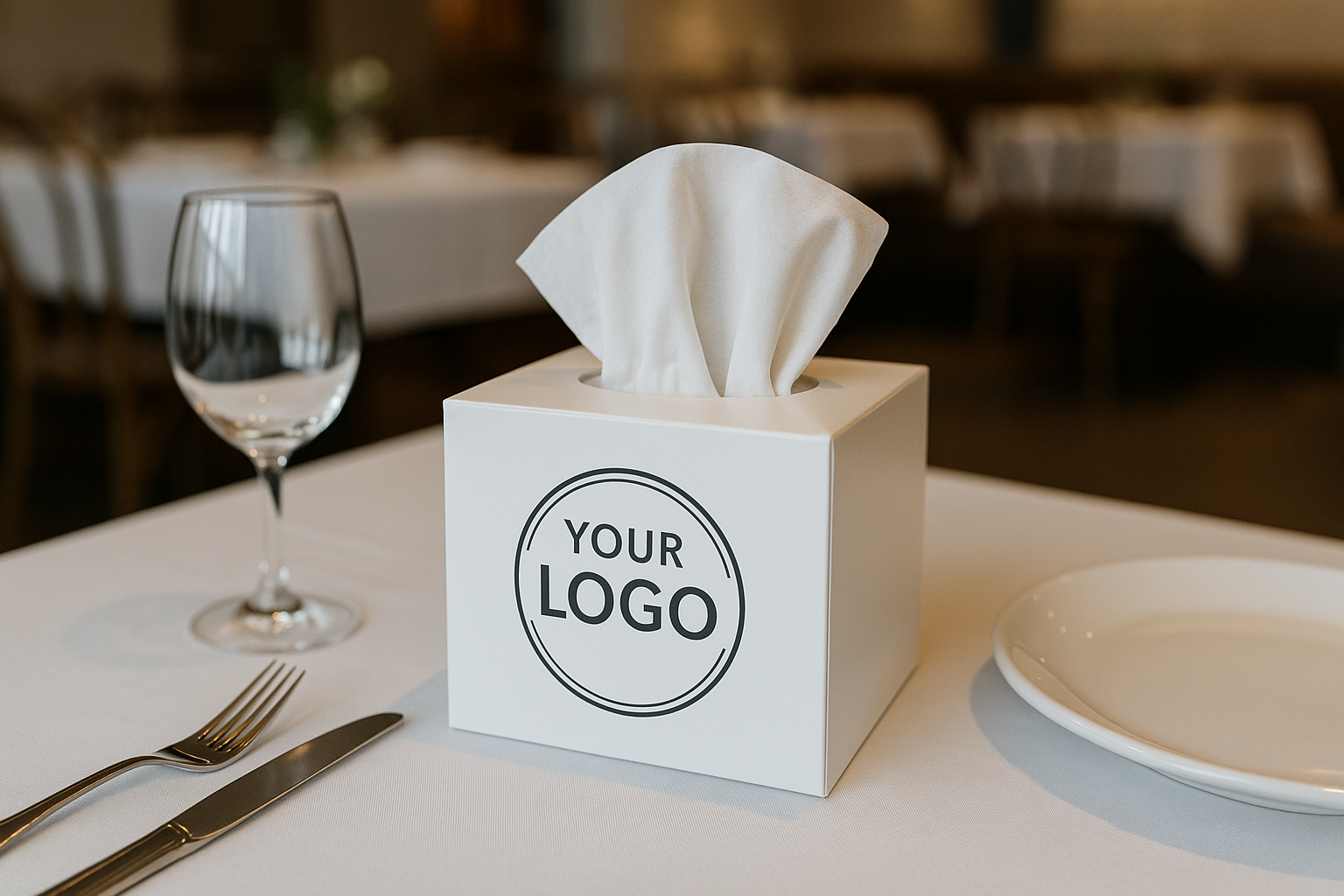
Let's explore more
Branded tissue packaging transforms a daily necessity into an advertising tool. When a guest reaches for a tissue, they see the restaurant’s logo. Over time, this builds recognition and loyalty.
Many Gulf-based cafes and restaurants use bilingual Arabic-English text to appeal to diverse guests. Luxury hotels often go further, adding gold foil or embossed logos to tissue boxes. During Gulfood Expo, I saw several suppliers showcasing tissues with custom color themes to match restaurant interiors.
For food service brands expanding through e-commerce or takeaway, logo-printed mini-packs extend visibility. A customer may carry the tissue pack in a bag, showing the logo beyond the restaurant space.
Customization costs less than many traditional marketing efforts, yet it adds long-term value. Procurement managers often view this as one of the most cost-effective branding investments.
Which Packaging Formats Are Most Practical for Cafes and Catering?
Cafes and catering services have unique needs compared to full-service restaurants.
Mini travel packs, cube boxes, and napkin-fold formats are practical choices for cafes and catering teams focused on portability and quick service.
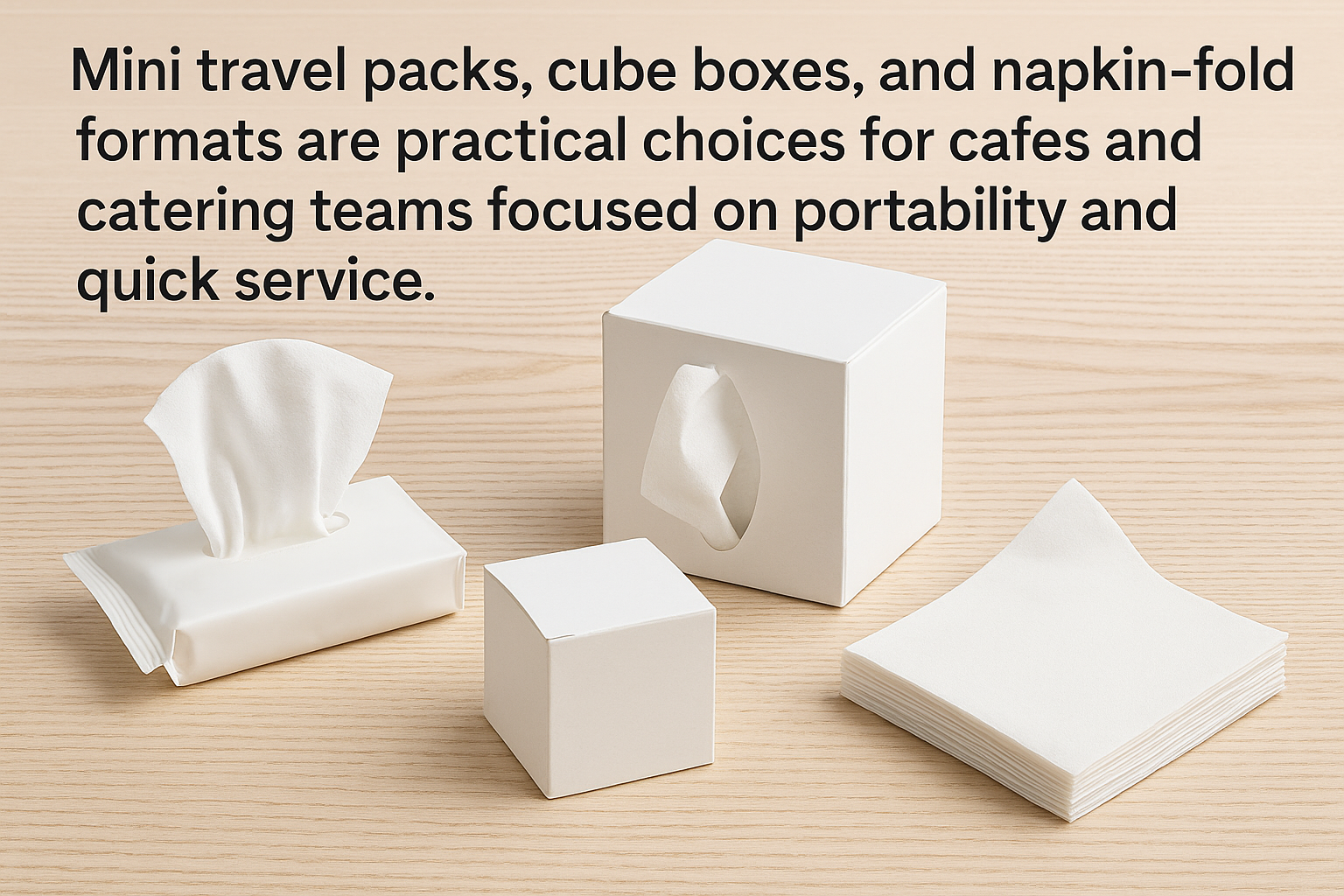
Let's explore more
Cafes usually work with limited counter or table space. Cube boxes are compact, stylish, and easy to position. For takeaway-heavy cafes, napkin-fold tissues in branded sleeves work better. They give guests a clean option without requiring bulky boxes.
Catering services often prefer individually wrapped mini-packs. These travel well, fit neatly into catering trays, and can be distributed during events. I once worked with a catering team in Doha that provided logo-printed mini-packs for a wedding. Guests loved them and even kept extras as souvenirs.
The choice depends on service flow. For high turnover venues, tissues must be quick to dispense and easy to restock. For premium venues, style and branding matter more. Understanding this balance helps procurement teams select the right format for their operation.
What Role Does Delivery and Supply Consistency Play in HORECA Tissue Sourcing?
The food service industry runs on schedules. Supply gaps directly impact guest satisfaction.
Reliable delivery schedules and bulk supply options ensure restaurants and caterers never run out of soft tissues during peak hours.

Let's explore more
Restaurants and catering businesses cannot afford shortages. Tissue usage spikes during peak service or large events. Suppliers must offer bulk options with consistent delivery schedules.
In the UAE, many procurement teams rely on monthly or even weekly deliveries to keep stock levels steady. Some work with local distributors for faster restocks, while others source directly from manufacturers to secure better pricing on container loads.
From my conversations with procurement managers, the number one frustration is inconsistent supply. A missed delivery forces teams to buy emergency stock at higher prices, cutting into margins. Reliable suppliers not only deliver on time but also provide flexible packaging options to match different needs.
Consistency in supply builds trust. Over time, restaurants view dependable tissue suppliers as long-term partners, not just vendors.
Conclusion
Soft tissue packaging in food service is about more than utility. The right format, hygiene, and branding turn a simple product into a trusted part of guest experience.
Share this article
About the Author

You might also like
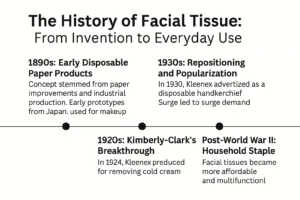
The History of Facial Tissue: From Invention to Everyday Use?
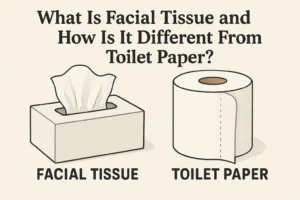
What Is Facial Tissue and How Is It Different From Toilet Paper?
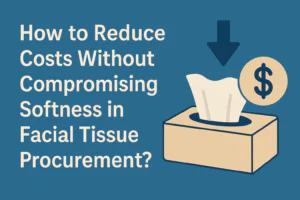
How to Reduce Costs Without Compromising Softness in Facial Tissue Procurement?

Is Bamboo Pulp a Better Option for Soft Facial Tissue Buyers?
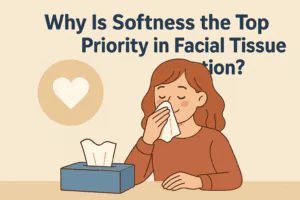
Why Is Softness the Top Priority in Facial Tissue Selection?
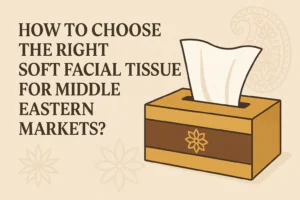
How to Choose the Right Soft Facial Tissue for Middle Eastern Markets?
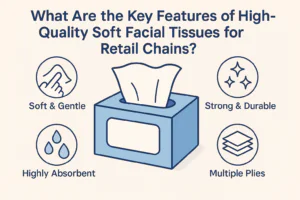
What Are the Key Features of High-Quality Soft Facial Tissues for Retail Chains?
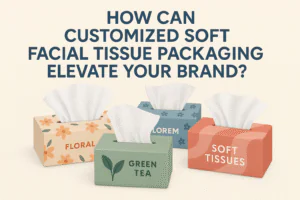
How Can Customized Soft Facial Tissue Packaging Elevate Your Brand?

Why Do Wholesalers Prefer Soft Facial Tissues Made from Virgin Pulp?
